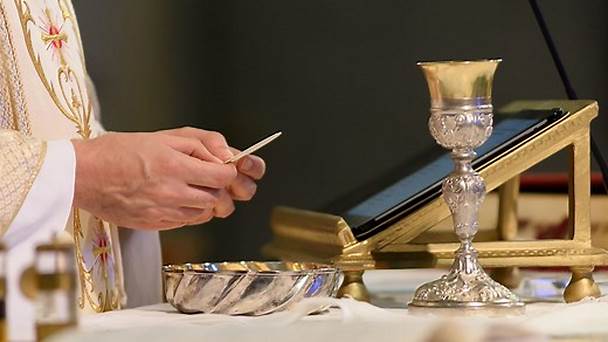Liturgy and Worship in Catholicism
The Mass
The Mass is the central act of worship in the Catholic Church and consists of two main parts: the Liturgy of the Word and the Liturgy of the Eucharist.
Introductory Rites:
- Entrance: Procession and entrance hymn.
- Greeting: Sign of the cross and opening greeting by the priest.
- Penitential Act: Confession of sins and asking for God’s mercy.
- Gloria: Hymn of praise (omitted during Advent and Lent).
- Collect: Opening prayer summarizing the intentions of the faithful.
- Liturgy of the Word:
- First Reading: Typically from the Old Testament.
- Responsorial Psalm: A psalm is sung or recited.
- Second Reading: From the New Testament letters.
- Gospel Acclamation: Alleluia (except during Lent) and a verse.
- Gospel Reading: A reading from one of the four Gospels.
- Homily: A reflection by the priest or deacon on the readings.
- Profession of Faith: Recitation of the Nicene Creed.
- Prayer of the Faithful: Intercessory prayers for the Church, world, and community.
2. Liturgy of the Eucharist:
- Presentation of the Gifts: Bread and wine are brought to the altar.
- Eucharistic Prayer: Includes the Preface, Sanctus, Consecration, Anamnesis, and Doxology.
- The Lord’s Prayer: Recitation of the Our Father.
- Sign of Peace: Exchange of peace among the congregation.
- Fraction Rite: Breaking of the bread.
- Communion: Distribution and reception of the Eucharist.
- Prayer After Communion: Final prayer thanking God for the Eucharist.
Concluding Rites:
- Announcements: Brief announcements if necessary.
- Blessing: The priest blesses the congregation.
- Dismissal: Sending forth of the faithful to live out the Gospel.
Read more about the liturgy and worship in Catholicism

you can read more of the
Liturgical Seasons
The liturgical year is divided into seasons, each with its own focus and mood:
- Advent: Preparation for the coming of Christ (four weeks leading up to Christmas).
- Christmas: Celebration of the birth of Jesus (begins on December 25 and lasts until the Baptism of the Lord).
- Ordinary Time: Focus on the teachings and ministry of Jesus (divided into two periods: between Epiphany and Lent, and between Pentecost and Advent).
- Lent: A period of penance and fasting in preparation for Easter (40 days, not including Sundays).
- Easter: Celebration of the Resurrection of Jesus (begins on Easter Sunday and lasts 50 days until Pentecost).
Devotions and Practices
- Rosary: A prayerful meditation on the mysteries of Christ’s life using a set of beads.
- Stations of the Cross: A devotional practice recalling Jesus’ path to Calvary.
- Eucharistic Adoration: Spending time in prayer and reflection before the Blessed Sacrament.
- Novenas: Nine days of prayer for a particular intention.
- Litany: A series of petitions in a responsive format, often directed to saints or aspects of Christ and Mary.
Sacred Music and Art
- Gregorian Chant: Traditional plainchant used in liturgical celebrations.
- Hymns and Psalms: Sung prayers and scriptures integrated into the liturgy.
- Liturgical Art: Stained glass, icons, and other visual art forms that enhance the worship space and reflect theological truths.
Significance
Catholic liturgy and worship are designed to foster a deep, communal encounter with God through word, sacrament, and communal prayer. The structure and content of the Mass, as well as other liturgical practices, are meant to lead the faithful into a deeper relationship with Christ and the Church, while also expressing the core beliefs and values of the Catholic faith. visit here to read more about the holy days of obligation of the catholic church




Leave a Reply